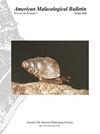改进自然史采集数据库中的种源数据
IF 0.4
4区 生物学
Q4 MARINE & FRESHWATER BIOLOGY
引用次数: 7
摘要
摘要:越来越多的自然历史文献记录了历史时期物种分布、形态、表型和遗传学的变化。然而,直到20世纪,采集日期才被常规记录在采集中,这使得很难确定生物变化的时间进程。各种形式的代理数据可以限制何时可能已经收集到特定样本。编目日期对潜在的收藏日期有上限,收藏家、捐赠者和其他前所有者等代理人的死亡日期也有上限,而收藏家的出生日期和活动日期则有下限。现场记录和采集记录等档案材料也可以提供限制条件。此类来源中的信息应在标准化的传记数据库中获取,以便通过收集数据库中的字段自动确定收集日期。软体动物是采样最好的后生动物之一,因此它们可以用来测试使用传记数据来限制采集日期的有效性。ANSP软化学数据库中缺乏收集日期的记录的随机样本表明,当已知代理人时,死亡日期信息会比编目日期有所改善,这是41%记录收集日期的限制。总体而言,包括缺乏代理人信息的记录在内,38%的记录有所改善。如果将旅行日期、居住、就业和其他关系等进一步的历史信息纳入传记数据库,则可以在这些范围上获得额外的改进。采集数据库需要适当的来源信息数据结构,以更严格地跟踪标本的所有权链,并允许与传记数据库建立更干净的接口。一项对美国其他大型软体动物收藏的调查表明,在更广泛的范围内,可以获得类似程度的改善,影响数百万个标本。如果这一结果可以推广到其他学科,那么自然史收藏中的标本比例将大大增加,可以用于生物变化的研究。与系谱数据库的互操作性可以加速将种源数据添加到自然历史数据库中。本文章由计算机程序翻译,如有差异,请以英文原文为准。
Improving Provenance Data in Natural History Collection Databases
Abstract: A growing use of natural history collections is documenting changes in species distributions, morphology, phenology and genetics during historical times. Until the 20th century, however, collecting dates were not routinely recorded in collections, making it difficult to determine the time course of biotic changes. Various forms of proxy data can constrain when a particular sample might have been collected. The date of cataloguing puts an upper limit on potential collecting dates, as do dates of death of agents such as collectors, donors, and other previous owners, and dates of birth and activity of collectors give a lower limit. Archival material such as field notes and acquisition records can also provide constraints. Information in such sources should be captured in standardized biographical databases to allow automated bounds on collecting dates to be applied via fields in collection databases. Mollusks are among the best sampled metazoans, so they can serve to test the effectiveness of using biographical data to constrain collecting dates. A random sample of records in the ANSP malacology database that lack date of collection shows that when an agent is known, date of death information improves on date of cataloguing as a constraint on collecting date for 41% of records. Overall, including records that lacked agent information, 38% had improvement. If further historical information such as dates of travel, residence, employment and other affiliations were included in biographical databases, additional improvement on these bounds could be obtained. Collection databases need appropriate data structures for provenance information to track the chain of ownership of specimens more rigorously, and to allow cleaner interface with biographical databases. A survey of other large mollusk collections in the United States suggests that a similar level of improvement could be obtained more generally, affecting millions of specimens. If this result could be extended to other disciplines, a substantially increased proportion of specimens in natural history collections would be accessible for studies of biotic change. Interoperability with genealogical databases could accelerate addition of provenance data to natural history databases.
求助全文
通过发布文献求助,成功后即可免费获取论文全文。
去求助
来源期刊
CiteScore
1.00
自引率
40.00%
发文量
1
审稿时长
>12 weeks
期刊介绍:
The American Malacological Bulletin serves as an outlet for reporting notable contributions in malacological research. Manuscripts concerning any aspect of original, unpublished research,important short reports, and detailed reviews dealing with molluscs will be considered for publication. Recent issues have included AMS symposia, independent papers, research notes,and book reviews. All published research articles in this journal have undergone rigorous peer review, based on initial editor screening and anonymous reviewing by independent expertreferees. AMS symposium papers have undergone peer review by symposium organizer, symposium participants, and independent referees.

 求助内容:
求助内容: 应助结果提醒方式:
应助结果提醒方式:


